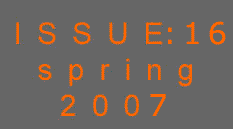
Introducing the use of artificial intelligence
in materials science
It is well known that nuclear reactor pressure
Vessel steels (RPVS) become brittle under neutron irradiation.
Copper precipitation is considered as one of the major causes
of this phenomenon and is, therefore, the subject of interest
of a research project started a few years ago at SCK•CEN
(Research Centre for Nuclear Energy, Mol, Belgium).
An accurate prediction of the kinetics of copper
precipitation in RPVS containing 0.1-0.3%Cu is important to assess
the lifetime of existing nuclear power plants. The concepts developed
in this project can, however, be applied to other binary alloys,
such as iron-chromium, the base for high-Cr ferritic/martensitic
steels. These are expected to play an important role in fusion
and in new generation fission plants.
The concept of Atomistic Kinetic Monte Carlo
(AKMC) simulations was introduced many years ago in scientific
literature and is particularly well-suited to studying problems
of solute segregation and precipitation in alloys for two major
reasons. The first is that, contrary to other Monte Carlo schemes,
the kinetics of the process is explicitly modeled allowing, for
example, for the time required to reach a certain average radius
of copper precipitates to be predicted under a given set of experimental
conditions: temperature, vacancy concentration (neutron flux),
copper concentration… The second is that the process is
modeled at the atomic level, i.e. by explicitly accounting for
the fundamental physical mechanism of solute diffusion in alloys.
The approach used in this project has an additional advantage:
the only required input is a reliable inter-atomic potential for
the alloy interesting question. In the present case such a potential
had been constructed to fit a number of key features of the Fe-Cu
system, in particular the experimental copper solubility limit
in iron.
At the moment, AKMC methods are limited to relatively
small simulation boxes, containing less than 1 million atoms.
Moreover, a rigid bcc crystallographic lattice is imposed, and
the presence of interstitials is not yet taken into consideration.
However, the main drawback of AKMC simulations is that they require
the evaluation of defect migration energies at each steps of the
calculation. This energy is a complex function of the local atomic
configuration (LAC). It can be accurately calculated, without
any simplification, with the aid of molecular dynamics (MD). MD
techniques are however extremely computational time costly, making
their systematic use in the course of an AKMC simulation totally
impossible to envisage.
In this project it is proposed to replace the
use of MD techniques by a fast artificial neural network (ANN).
The objective was, accordingly, to construct a fast, optimized
energy barrier calculation system composed of the ANN program,
a fuzzy logic (FL) system to feedback its predictions and a data
base module that records every MD calculation done.
A software coupling the ANN-FL-MD-Tables modules
has been developed and prepared to be used with the LAKIMOKA software
(the AKMC code developed by EdF, France). The concept of evolutionary
strategy, allowing the MD calculations to be focused on the most
problematic LAC’s, has been defined and proposed as a future
guideline to treat the real problem of copper precipitation in
iron under neutron irradiation.
Applications to the study of copper precipitation
in iron under thermal ageing, with the presence of one single
vacancy in the simulation box, have been performed to study the
evolution with temperature of the copper solubility limit in iron.
Although no fully satisfactory correlation with experimental measurements
has been obtained so far, the results are however highly encouraging,
because it has been shown that they are consistent with reference
equilibrium conditions previously reached with other Monte Carlo
simulations. On the basis of these studies, guidelines to achieve
better compatibility with experimental data in future simulations
could, therefore, be identified.
The originality of this project resides in the
use of advanced computational tools in material sciences: an ANN
is used as a correlation function to avoid the use of a costly
but accurate technique and a genetic algorithm is used to prepare
a fuzzy logic system to feedback the ANN predictions and, thus,
improve the system’s performance. The project is, consequently,
the application of known modern tools to solve a problem never
addressed before with their use, or, conversely, it is the development
of a new method to solve a well-known but not yet completely solved
problem. The ultimate goal of this field of research is to simulate
years of irradiation under large neutron fluxes. The use of artificial
intelligence is an elegant and very promising tool for this purpose.
The project is led by Dr. L. Malerba, with the
collaboration of Dr. R. Domingos and Dr. F. Djurabekova. It has
been the subject of a Masters thesis presented by N. Castin for
the degree of Master of Sciences in Nuclear Engineering (Belgian
Nuclear higher Education Network, BNEN), which has been awarded
by SCK•CEN the title of “the best university thesis
for the academic year 2005-2006.”
Editor’s note: N. Castin has recently
also received recognition from the Belgian Nuclear Society as
the “Best nuclear science university thesis for 2006.”
|



